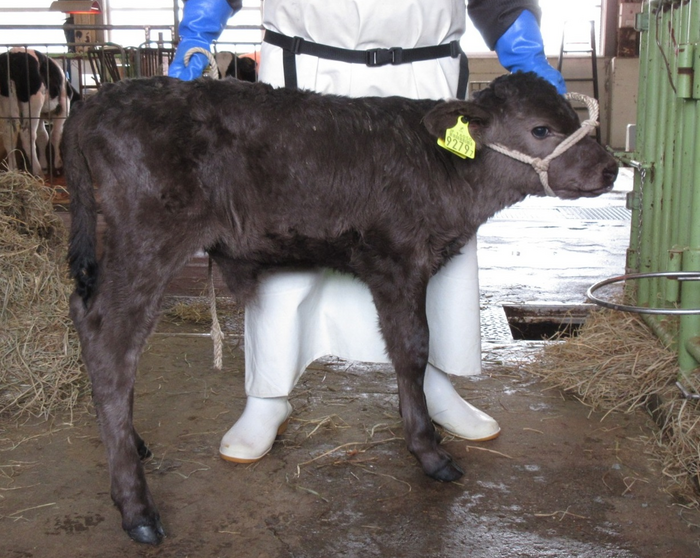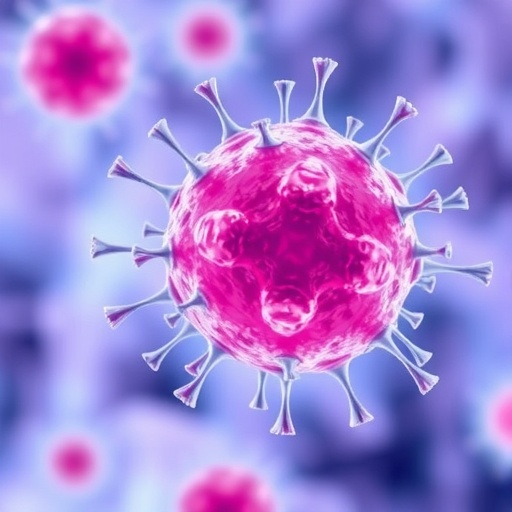Assisted reproductive technology, known as ART, is the umbrella term to describe fertility treatments that involve eggs and embryos. Many people turn to ART techniques like in vitro fertilization to resolve fertility problems, but this is an expensive process that can have a low success rate.

Credit: Satoko Matoba, NARO (Present Institute: National Livestock Breeding Center)
Assisted reproductive technology, known as ART, is the umbrella term to describe fertility treatments that involve eggs and embryos. Many people turn to ART techniques like in vitro fertilization to resolve fertility problems, but this is an expensive process that can have a low success rate.
In a paper published in June in Biochemical and Biophysical Research Communications, scientists outline a new imaging technique tested in cattle to identify and understand the relationship between chromosomal errors that develop early and embryonic loss.
Previous research in mice has shown a relationship between chromosome errors that happen early in a zygote’s development leading to embryonic loss, but this relationship is not well understood in non-rodents. Cattle is an ideal model and next step for ART research because ART is frequently used in cattle breeding and a high rate of embryonic losses is common. There are also several similarities between cow and human embryos and how they develop.
“Chromosome aneuploidy is thought to occur due to chromosome segregation errors that develop early, which may cause embryonic loss,” said researcher Satoshi Sugimura of the Institute of Agriculture at the Tokyo University of Agriculture and Technology in Tokyo, Japan. “We developed minimally invasive live-cell imaging and showed the relationship between chromosome segregation error and in vitro and post-transfer embryonic development.”
Chromosome segregation happens after fertilization when the zygote begins to go through cell division. When the cell divides, both cells should have a complete set of chromosomes. When this does not happen as it should, it is called a chromosome segregation error. These errors lead to aneuploidy, which is when there are too many or too few chromosomes in a cell. Frequent aneuploidy has been reported in humans and cattle in the early cleavage stages, but its relationship to subsequent development has not been clarified in non-rodents. So, researchers tried to clarify the relationship using live-cell imaging with injection of mRNA encoding histone H2B-mCherry.
“We produced phenotypically normal non-transgenic offspring from bovine embryos with live-cell imaging of chromosome segregation,” said Sugimura, marking the birth of the world’s first healthy calf from an embryo whose chromosome distribution was observed by the live-cell imaging technique.
“Chromosome segregation error, especially micronucleus formation during early cleavage division was a potential hallmark of preimplantation embryonic loss in non-rodent mammals,” said Sugimura. Researchers suspect that specific errors that occur earlier in the cleavage process, such as during the first three mitotic divisions, are more detrimental. These errors, which result in micronuclei formation, are considered severe. Zygotes with abnormal chromosomal segregation during the first three mitotic divisions rarely develop to the blastocyst stage. However, if they do develop into blastocysts, these embryos have the same birth rate as those that did not have abnormal chromosomal segregation.
Half of the calves born during this study came from a group that showed evidence of chromosome segregation errors during early cleavage. Because of this, the error may not be a predictor of postimplantation embryonic loss.
“This technique has shown potential for understanding the relationship between chromosome segregation error and subsequent embryo development, low ART success, and for selecting viable ART-derived embryos for medical and livestock production. In the future, if the mechanism of appearance and origin of chromosome segregation error in early cleavage division can be elucidated and controlled, ART success may be improved,” said Sugimura.
Research groups of Dr. Satoshi Sugimura (Tokyo University of Agriculture and Technology), Dr. Kazuo Yamagata (Kindai University), Mr. Tatsuma Yao (FUSO pharmaceutical Industries, Ltd.), and Dr. Satoko Matoba (NARO, Present Institute: National Livestock Breeding Center)), now report in the journal Biochemical and Biophysical Research Communications, that Micronucleus formation during early cleavage division is a potential hallmark of preimplantation embryonic loss in cattle.
The Japan Society for the Promotion of Science supported this research.
###
About Tokyo University of Agriculture and Technology (TUAT)
TUAT is a distinguished university in Japan dedicated to science and technology. TUAT focuses on agriculture and engineering that form the foundation of industry, and promotes education and research fields that incorporate them. Boasting a history of over 140 years since our founding in 1874, TUAT continues to boldly take on new challenges and steadily promote fields. With high ethics, TUAT fulfills social responsibility in the capacity of transmitting science and technology information towards the construction of a sustainable society where both human beings and nature can thrive in a symbiotic relationship. For more information, please visit http://www.tuat.ac.jp/en/.
About Kindai University
Kindai University was founded in 1925. Now one of Japan’s largest universities, it has six campuses in western Japan and boasts research facilities across the nation—from Hokkaido in the north to Kagoshima in the south. Currently, Kindai University comprises 15 faculties with 49 departments, 11 graduate schools, a law school, 17 research facilities, two junior colleges, 18 associated primary and secondary schools, and two teaching hospitals. The university has over 30,000 students and more than 500,000 alumni.
Kindai University conducts research in a wide range of fields and is making a name for itself as a leader in aquaculture, most notably for its work with Bluefin tuna, and also in research of resurrecting extinct animals such as mammoth. Dedicated to meeting the needs of today’s rapidly changing society, Kindai University will continue expanding its educational programs and facilities.
Website: https://www.kindai.ac.jp/english/
About National Agriculture and Food Research Organization (NARO)
NARO is the core institute in Japan for conducting R&D mainly focusing on agriculture and food along with global food security and environmental issue. In April 1893 “Agricultural Experimental Station” was founded as the national research organization in Japan. Later, it was reformed as the National R&D Agency and renamed as “National Agriculture and Food Research Organization”. One of the missions of NARO is to contribute towards achieving Sustainable Development Goals (SDGs) by the realization of “Society 5.0” in agriculture & food industry under the four pillars of Agri food business, Smart production system, Agri-bio system, and Robust agricultural system. NARO aims to become one of the world’s top-notch research organizations, producing one-of-a-kind achievements seamlessly at each stage from basic research to practical application with a clarified exit strategy. It also focuses on the speedy implementation of its achievements by promoting public relations and promulgation efforts through industry-academia-government cooperation.
For more information kindly visit: https://www.naro.go.jp/english/index.html
Contact Information:
(Bovine IVF embryo)
Satoshi Sugimura
+81-42-367-5819
[email protected]
(Live-cell imaging)
Kazuo Yamagata
+81-736-77-3888
[email protected]
Journal
Biochemical and Biophysical Research Communications
DOI
10.1016/j.bbrc.2022.05.075
Article Title
Micronucleus formation during early cleavage division is a potential hallmark of preimplantation embryonic loss in cattle
Article Publication Date
1-Jun-2022




